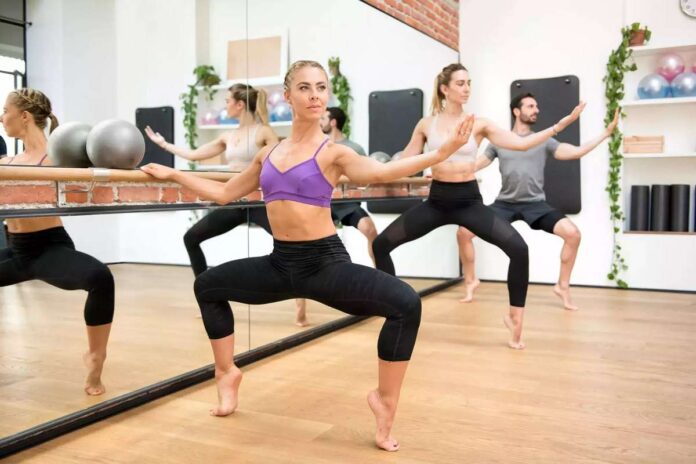Ballet-inspired fitness classes, referred to as “barre” workouts, continue to be one of the hottest workout trends around. A mixture of strength training, balance, and posture work, they are touted as a way to get lean, long, and strong—that is, achieve a ballet dancer’s body. According to a 2016 report from the Sports & Fitness Industry Association, more than 700,000 people regularly participate in barre programs in the U.S. The name derives from the French word barre, which is the rail used in ballet classes.
Barre basics
Numerous health clubs, gyms and studios provide barre sessions with a variety of titles, including Bar Method, Pure Barre, Barre3, and Beyond Barre, all of which are set to music. The majority of exercises performed at the barre concentrate on isometric muscular strength and endurance, which include holding the contraction of a single muscle while doing swift, brief contractions (or pulsing) of a body component.
However, there isn’t any elaborate footwork, and no one is donning leotards or ballet slippers—barefoot dancing is the rule. And the workouts go beyond the barre, typically incorporating other dance techniques, along with yoga, Pilates, aerobic moves, jumping (plyometric) activities, and the use of elastic resistance bands, fitness balls, and light hand weights. Some classes concentrate more on floor work than on the barre exercises.
It’s all about doing a variety of postures, positions, and exercises that target specific muscles. The work at the barre often focuses on the lower body, especially thighs, glutes, and calves. Core-focused moves—including planks done on the mat—work the abs. There may also be arm work.
Risky business?
Unlike with, say, Cross Fit or spinning classes, barre classes are not a demanding, intimidating, or over-the-top exhausting workout. No heavy weights are used. The classes even look calm and relaxing. But that does not imply that they are without risk. Common injuries involve the lower back, knees, and shoulders—and people who have previous injuries, biomechanical problems, arthritis, or just tight muscles need to be extra cautious. For instance:
- The “turnout” position, where you rotate your legs outward, is encouraged at the barre. But the degree to which you can achieve this position depends on many factors, including the structure of your hip joint and lower leg as well as the strength and flexibility of the muscles around your hip. If you don’t have good range of motion, overdoing this can cause strains in your foot, ankle, knee, hip joints, and lower back.
- Tucking the abdomen in towards the spine while tightening the gluteal muscles is emphasized during barre moves—but overtucking can lead to excess stress on the lower back and sacroiliac joint (which connects the bone at the lower spine to the pelvis).
- Some positions require a deep squat that may stress the knees, especially in people with arthritis or other knee problems. Doing exercises while standing on the balls of your feet, a typical ballet position, can also stress foot and other joints.
- Positions where you hold the barre behind you with arms outstretched could overstress the shoulder, especially the rotator cuff. So too might lifting weights overhead, as is done in some classes.
- Keep in mind that isometric and pulsing movements increase strength in a limited range of muscles and won’t build the kind of strength you need to carry out activities of daily living, such as carrying groceries and walking up stairs. And though barre classes may incorporate aerobic components, they are not of high enough intensity to significantly boost cardiovascular fitness.
Barre notes
If you have any biomechanical problems or injuries, speak with the instructor before taking a barre class. You may need to modify some traditional positions, such as those that rely on the turnout and tucked pelvis, instead keeping your feet parallel and your pelvis neutral. (Modifications can be done to most of the exercises and positions if necessary.)
But even if you’re healthy and in shape, as with any group fitness programs you should go at your own pace in barre classes, and not work beyond your ability. In general, avoid extreme positions, and don’t hold any position, such as the pointed toe position, so long that you feel pain. If your muscles are “burning” or feeling “jello-like,” as participants have described, that’s a warning they’re so fatigued that your posture may suffer and you could overstrain your joints or cause other injuries.




